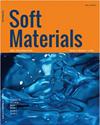氧化程度对含N, o -羧甲基壳聚糖黄原胶水凝胶理化性质的影响
IF 1.4
4区 材料科学
Q4 MATERIALS SCIENCE, MULTIDISCIPLINARY
引用次数: 0
摘要
大多数黄原胶基水凝胶通过物理方法交联,但它们通常具有不足的机械强度和较低的热、pH和盐稳定性。为了改善XG基水凝胶的物理化学性质,本研究采用高碘酸盐氧化XG制备开环产物,形成具有双醛基团的化学交联水凝胶。研究了不同程度氧化黄原胶(OXG)对水溶性壳聚糖衍生物N, o -羧甲基壳聚糖(NOCC)水凝胶性能的影响。结果表明:NOCC/OXG水凝胶的刚性和脆性随XG氧化量的增加而增强;NOCC/OXG水凝胶的溶胀率提高了3.5倍,降解率降低了1.5倍。这些水凝胶是很有前途的生物材料,用于药物输送,细胞治疗或组织再生应用。本文章由计算机程序翻译,如有差异,请以英文原文为准。
Effects of oxidation degree on the physicochemical properties of xanthan gum hydrogels containing N,O-carboxymethyl chitosan
ABSTRACT Most xanthan gum-based hydrogels are crosslinked by physical methods, but they typically have inadequate mechanical strength and low thermal, pH, and salt stability. To improve the physicochemical properties of XG-based hydrogels, this study applied periodate oxidation of XG to produce ring-opened products with dialdehyde groups for forming chemically crosslinked hydrogels. The research investigated the effects of oxidized xanthan gum (OXG) at different degrees on the properties of its hydrogels with N,O-carboxymethyl chitosan (NOCC), a water-soluble chitosan derivative. Results show that the rigidity and brittleness of NOCC/OXG hydrogels were enhanced with the increased oxidation of XG. Additionally, the swelling ratio of NOCC/OXG hydrogels was increased by 3.5 times and the degradation rate was reduced by 1.5 times. These hydrogels are promising biomaterials for drug delivery, cell therapy, or tissue regeneration applications.
求助全文
通过发布文献求助,成功后即可免费获取论文全文。
去求助
来源期刊

Soft Materials
工程技术-材料科学:综合
CiteScore
2.90
自引率
0.00%
发文量
21
审稿时长
2.2 months
期刊介绍:
Providing a common forum for all soft matter scientists, Soft Materials covers theory, simulation, and experimental research in this rapidly expanding and interdisciplinary field. As soft materials are often at the heart of modern technologies, soft matter science has implications and applications in many areas ranging from biology to engineering.
Unlike many journals which focus primarily on individual classes of materials or particular applications, Soft Materials draw on all physical, chemical, materials science, and biological aspects of soft matter. Featured topics include polymers, biomacromolecules, colloids, membranes, Langmuir-Blodgett films, liquid crystals, granular matter, soft interfaces, complex fluids, surfactants, gels, nanomaterials, self-organization, supramolecular science, molecular recognition, soft glasses, amphiphiles, foams, and active matter.
Truly international in scope, Soft Materials contains original research, invited reviews, in-depth technical tutorials, and book reviews.
 求助内容:
求助内容: 应助结果提醒方式:
应助结果提醒方式:


